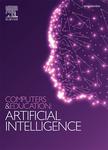版权所有:内蒙古大学图书馆 技术提供:维普资讯• 智图
内蒙古自治区呼和浩特市赛罕区大学西街235号 邮编: 010021

作者机构:School of Computing University of Eastern Finland P.O.Box 111 Joensuu80101 Finland School of Business JAMK University of Applied Sciences Jyväskylä Finland School of Computing and Data Science Willamette University SalemOR United States School of Computing University of Eastern Finland P.O. Box 111 FIN Joensuu80101 Finland Department of Curriculum and Instruction Faculty of Education The Chinese University of Hong Kong Shatin Hong Kong
出 版 物:《Computers and Education: Artificial Intelligence》 (Comput. Educ.)
年 卷 期:2022年第3卷
核心收录:
基 金:The authors would like to acknowledge the teachers and students who participated in this study
摘 要:As society deals with the advances and disruptions owing to artificial intelligence, children must understand how it works. Especially that children grow up with these technologies will help them develop into informed citizens and better understand the world around them. While artificial intelligence education has been considered relevant, there is a growing global trend to teach artificial intelligence across K-12 levels. This development has necessitated designing and implementing artificial intelligence curriculum and related resources in schools. Notwithstanding that the developed curriculum may be adopted in another context, unique needs exist that suggest contextual and cultural values be considered. Besides, the current curriculum and resources designed to promote artificial intelligence education literacy are eastern and western-centric, which indicates a clear gap in artificial intelligence education in Africa. Therefore, this study examines the competencies required to be artificial intelligence literate, utilizing Nigerian secondary school students’ data considering gender variation and school ownership type. A total of 605 students provided valuable responses for the analysis done with WarpLS software. We performed structural equation modelling to understand the relationship among the adopted variables utilized in the study. This study reveals the importance of teamwork and the significance of human-tool collaboration in artificial intelligence literacy through course content. This finding emphasizes the significance of teamwork among students to keep up with the pace of emerging technologies. The multigroup analysis also reveals no significant differences across gender and school type. We conclude the study with the implication of the findings and proposed future research agenda. © 2022 The Authors